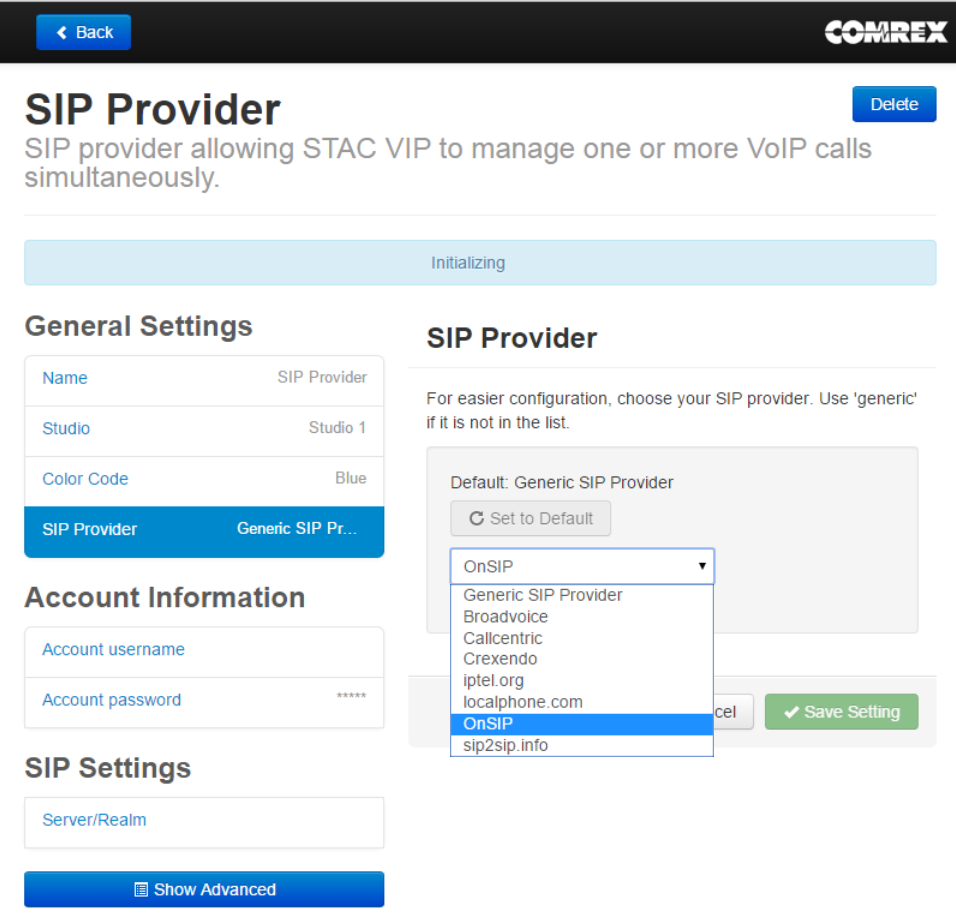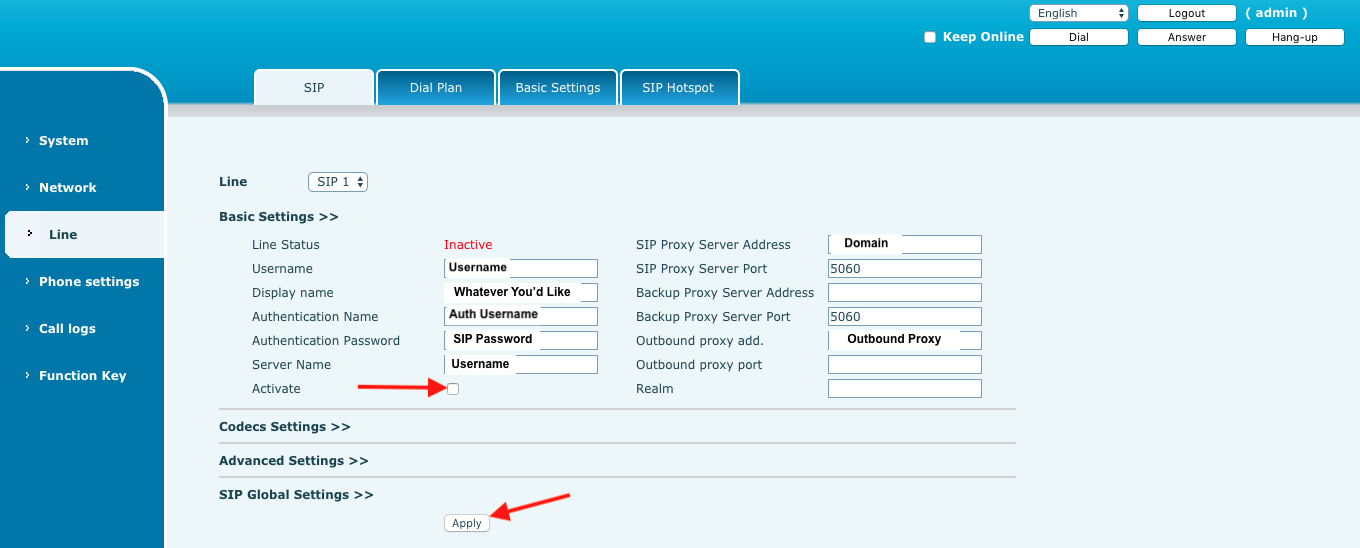
We do have phones which registered and are working just fine but we have a number of Polycoms which I cannot get registered.Ģ particular units did register and were shown as Endpoints and functined fine initially… but then just disappeared from PJSIP Show Contacts / Show Endpoints !!

We have mostly Polycom IP Sound Point 650s which are up to date with firmware etc.
Onsip my sip details install#
If you wish to use another scheme or have special needs, please contact us, and a Junction Networks sales representative will get back to you shortly.Hi All… We are running FreePBX 16 new Install and have a mix of phones we need to add. In particular, we can provide specialized configurations with respect to authentication (for example, authentiation based on IP address only), codecs, dtmf, as well as custom failover scenarios. We do provide a range of SIP configuration alternatives - one of which may be more suitable for your situation than our standard setup. Please contact your Junction Networks sales representative for assistance. Multiple accounts can be consolidated under one customer account for billing purposes (to share a single balance, for example). MiscellaneousĬonsolidating Accounts Under a Single Bill Inbound calls originate from the server with which a customer is registered.ĭTMF is supported as defined in RFC 2833. This server is recommended for use with SIP servers and IP PBXes.Ĭustomers are required to receive unauthenticated inbound calls. As this configuration allows the routing of incoming calls based on the DID that was called, registering with can be helpful if a customer subscribes to more than one DID. The DID may be any that the customer subscribes to. Calls are delivered to the most recently registered contact. Inbound calls from are addressed to the phone number dialed (the DID).
Onsip my sip details password#
Your VOIP password can be found by logging into and going to the VOIP page. *** Please note that your VOIP password is not the same as the password used to login to the Junction Networks web site.

Customers are expected to register using their Junction Networks username and password. The standard approach is used to authenticate registrations (the Proxy-to-User Authentication scheme as outlined in Section 22.3 of RFC 3261). It allows us to learn the current location of a customer and thus where to send their calls. Receiving Inbound Calls (Registration & Origination) International numbers need to be prefixed with "011".ĭTMF is supported as defined in RFC 2833.Įxample SIP Call Flow User Junction Networks North American numbers are required to be prefixed with a '1'. The standard e.164 numbering plan ( ITU) is used. However, the display name is propageted where it can be - on-network calls for example. As such, caller-id name information cannot be reliably delivered. On the PSTN, the caller-id number is matched to the number database of the local telephone company to determine the name provided with caller-id. Otherwise, if the display name is a valid phone number, it is used as the caller-id number associated with a call.Ĭaller-id name information cannot be propagated to the PSTN. If the username is a valid phone number (ten or eleven digits), it is used as the caller-id number associated with a call.

A username is a non-numeric address and must begin with a letter and may contain only letters, numbers, periods, underscores, and dashes or a combination thereof.ĭomain - a domain must contain no more than 60 characters and must be a standard domain lowercase letters, numbers, and dashes.
Onsip my sip details registration#
Registration is not required to terminate calls. If identification by username fails, the authorization username is used. Customers are identified by their username. The standard approach is used to challenge all requests (the Proxy-to-User Authentication scheme as outlined in Section 22.3 of RFC 3261). Our SIP server for PSTN Gateway service is *****NOTE*****This document is deprecated.


 0 kommentar(er)
0 kommentar(er)
